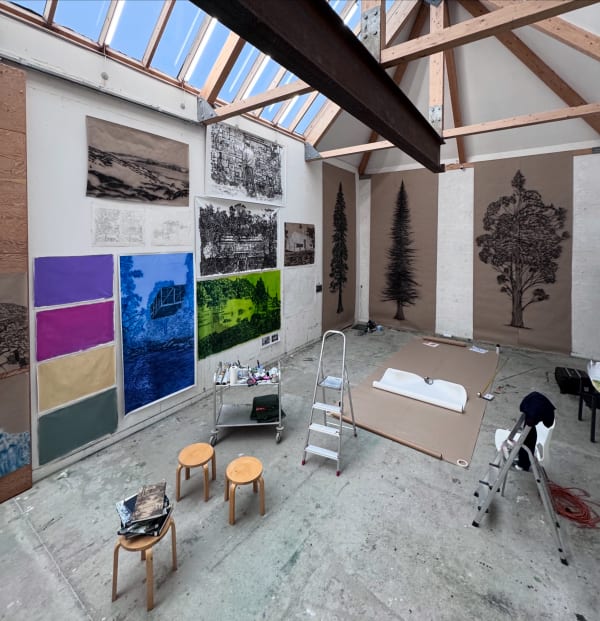Per Kirkeby Studio Læsø AIR, Denmark: Studio Residency
Eamon O’Kane – Residency at Per Kirkeby’s Studio, Læsø
In the summer of 2025, Eamon O’Kane undertook an artist residency at Per Kirkeby’s studio on the island of Læsø, Denmark. The residency offered a unique opportunity to immerse himself in the distinctive landscape and atmosphere of the island, as well as to engage directly with the legacy of one of Denmark’s most important artists. Kirkeby’s studio, a carefully designed space nestled in the dunes and surrounded by the island’s light-filled openness, became both a site of contemplation and a catalyst for new work.
During his stay, O’Kane developed a new body of paintings, drawings, and spatial studies that explore architecture, landscape, and temporality, recurring themes throughout his practice. Responding to the island’s shifting weather, the rhythm of tides, and the architecture of Kirkeby’s studio itself, he created works that reflect the dialogue between built and natural environments. The residency allowed O’Kane to extend his long-standing interest in the relationship between art and architecture, finding resonance in Kirkeby’s dual identity as both painter and trained geologist.
O’Kane’s time on Læsø also deepened his engagement with the material and metaphysical qualities of place. The quiet isolation of the island provided the conditions for a meditative working process, while the history of Kirkeby’s own practice, his exploration of form, memory, and geological time, offered a meaningful framework for reflection.
The resulting works combine O’Kane’s characteristic precision and sense of spatial structure with a more elemental attention to colour, texture, and light. They form a dialogue between two generations of artists who, though separated by time, share an understanding of painting as a site where the worlds of nature, architecture, and imagination converge.
The residency at Per Kirkeby’s studio marks an important chapter in O’Kane’s ongoing exploration of how artistic practice can inhabit and reinterpret architectural and historical contexts. It continues his investigations into the studios, houses, and environments of artists and architects—from Le Corbusier and Eileen Gray to Lina Bo Bardi and Richard Neutra—positioning the studio not just as a workplace, but as a living structure shaped by thought, time, and landscape.
























































